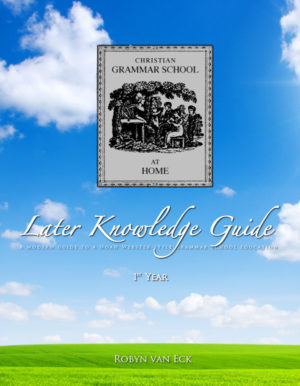Photo by Aaron Burden on Unsplash
A core component of the Christian Trivium approach to grammar school—in the Later Knowledge years of Grammar of Grace—is for the student to be reading the Bible and other truly worthwhile books, and summarizing each day’s reading assignment. There are no tests; no comprehension quizzes; no short-answer questions. (As usual, none of the modern methods!) Children are taught many things through this approach, not the least of which is Reading Comprehension. Here’s a bit of the instructions for how to teach Reading Comprehension to your child; it’s specifically geared toward ten-year-olds, but can be applied to a wide range of ages.
Excerpted from Christian Grammar School at Home: 1st Year Later Knowledge Guide.
Oh, but this is one of the beauties of the sort of education we’re giving our children! Words fail me, to express how far superior this method is to the multiple choice or short-answer comprehension questions we were given when we were students, getting our modern educations.
When children are given “study guides” with short answer or multiple choice questions about comprehension, they are taught that it is only important to pay attention to the things that are on the quizzes or tests, when they read. This is so deeply flawed. Instead, in the Christian Grammar School at Home guides, we teach our children to read, and we check to make sure they’re paying attention by asking them to summarize what they’ve read. This teaches them that they must pay attention to all that the author has written. And it teaches them to think about and process what they’ve read. And it also teaches them to write—at the very level where they are capable of writing—while having in mind excellent examples of writing for them to learn from (the works being summarized)….
If it’s clear the child has not understood his reading assignment, this is where your parental judgment (again) comes into play. It may be best for him to read a few pages again (out loud!). Or it may be best for him to read the whole chapter again (out loud). Or it may be best for him to read it to you, so you can hear what he’s not understanding. It may be that he did not understand some words, and was too lazy to look them up. In that case, this is a great moment to explain that one must look up words one does not understand, because words have meaning, and if the student doesn’t understand the words, he will miss something important! Or it may be that he did not understand some complex sentence structure. In this case, it may be helpful for you to explain how the sentence fits together, and read it with emphasis, until he does understand it. (Sometimes I have to read the sentence aloud more than once, myself!)
This is individualized instruction, teaching your child how to understand. There’s no substitute for it. Your key question is: What does that mean? Ask it again and again. In some difficult cases, for example, in Kipling’s poetry in The Jungle Book this year, you the parent may have to put your own “thinking cap” on! And there are times when, eventually, you do have to give your student the answer. But be slow to do that.
A word to the wise: You have heard the idea that the brain is like a muscle? If you don’t use it, it becomes weak. And it takes effort to use it! Children will be tempted to be lazy. I find that my child is most likely to have a bad attitude when I am checking his Comprehension, because, by nature, he wants the answers to come easily and doesn’t want to have to puzzle through riddles. I try to encourage each child that great writing is often a puzzle, a riddle to solve. I tell him about how his brain is like a muscle, and he needs to use it. I pray for ways to encourage him to try hard. This can, on certain days, be a very trying endeavor, but it may be the single most rewarding one; when you lovingly demand that the child think when he does his work, his mind will become a well-crafted tool for him to use, his entire life.
In a way, it’s difficult, because there are no pat answers, and each child’s answers will be different. And we modern parents view this sort of approach as foreign, which is always scary.
But the approach itself is beautifully simple.
The student reads. Then he writes a summary about what he’s read.
This is old-school grammar school, from before the days of workbooks and bubble sheets. And it works. It’s amazing to see the children who are being taught by this method develop—in their reading comprehension, writing ability, spelling, and everything else.
Thanks for dropping by; please keep us in prayer!


